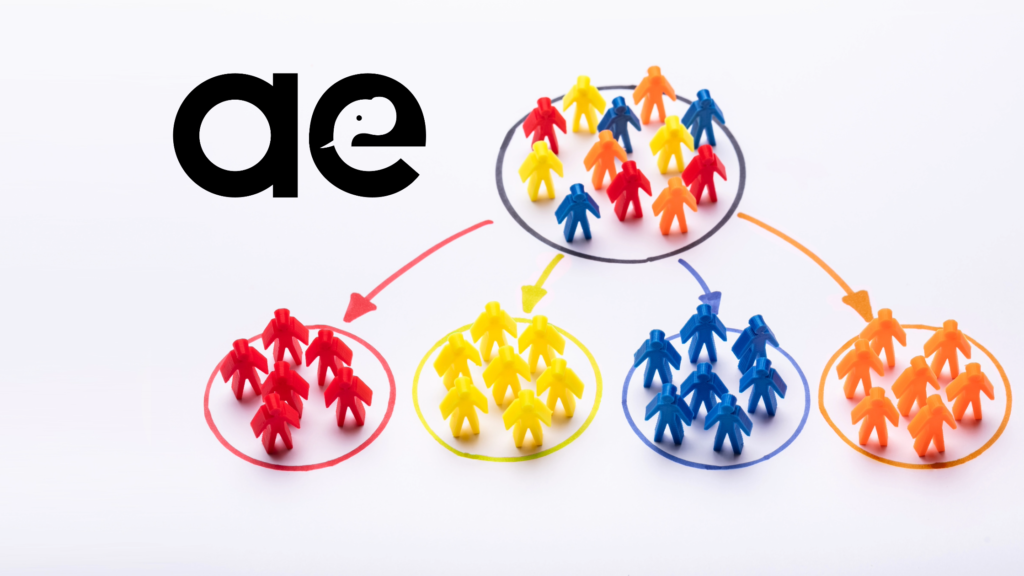What does segmenting your email audience list have to do with effective email marketing?
Well, you invest time and resources into your email platform for it to work, right?
You hope that the audience list holds enough gold to turn into clients and raving fans of your business.
But, how well do you know them?
Is it just one big mass of email addresses that you mass blast an email to?
Don’t do that.
Today we talk about how segmenting provides value and proves a crucial strategy for more effective email marketing.
Researching Your Audience
By breaking down your subscribers into smaller groups based on their characteristics and behaviors, you have to know who they are. That starts with the following research and categorization tasks.
Understanding your customer base
Before you can effectively segment your audience lists, it is important to thoroughly research and understand your customer base.
This involves collecting and analyzing data on your subscribers’ demographics, purchase history, behaviors, and preferences. By gaining insights into who your customers are and what they want, you can create more accurate and relevant segments that cater to their specific needs.
Using demographic segmentation
Demographic segmentation involves dividing your subscribers based on their age, gender, location, income level, or other demographic factors.
This can help you deliver targeted content and offers that are more likely to appeal to each sub-group. For example, if you are a clothing retailer, segmenting your email list based on gender can allow you to send tailored promotions or new arrivals to men and women separately.
Utilizing behavioral segmentation
Behavioral segmentation involves categorizing your subscribers based on their interactions and actions with your emails, website, or products.
This can include factors such as past purchase behavior, engagement rates, click-through rates, or browsing history. By segmenting your audience based on their behavior, you can send more personalized and timely messages that address their specific interests or needs.
Creating buyer personas
Developing buyer personas can be a valuable tool in segmenting your audience lists effectively. A buyer persona is a fictional representation of your ideal customer and includes details such as their demographics, motivations, pain points, and goals.
By creating buyer personas, you can better understand the different types of customers you have and segment your email lists accordingly. This allows you to send relevant and targeted content that resonates with each persona, increasing the chances of engagement and conversion.
Regularly reviewing and updating your segments
Segmenting your audience lists is not a one-time task. It is important to regularly review and update your segments as your customer base and their preferences may change.
By analyzing the performance of your segments and making adjustments accordingly, you can ensure that your email campaigns continue to deliver value and results.
Personalization
By dividing your email subscribers into different segments based on specific criteria, you can deliver personalized and targeted content that resonates with each group. This practice not only improves engagement rates but also allows for data-driven decision-making, resulting in effective email marketing campaigns.
One of the main benefits of segmenting your email audience is personalized communication. By understanding your subscribers’ interests, preferences, and behavior, you can tailor your emails to their specific needs. This customization fosters a deeper connection with your audience, leading to increased engagement and higher conversion rates.
Risks
Another reason to segment your audience list is the potential risks of not doing so. Sending generic, one-size-fits-all emails can lead to decreased open rates and higher unsubscribe rates.
On the other hand, sending targeted content that meets the needs and expectations of each segment can significantly boost open rates and keep subscribers engaged.
Data-Driven Decisions
Moreover, segmentation allows you to make data-driven decisions. By analyzing the performance of different segments, you can identify trends, preferences, and behaviors that inform your email marketing strategy. This valuable information helps refine your campaigns, optimize the marketing funnel, and ultimately drive better results.
Creating Relevant Content
When it comes to email marketing, one size doesn’t fit all. To truly engage your subscribers and increase conversion rates, it’s important to create relevant content that speaks directly to their interests and needs. This is where email segmentation comes in.
Adapting content goes beyond just the body of the email. You can also customize subject lines to pique the interest of each segment.
For those who have engaged you for home insurance, you can offer other coverages, like Auto and Umbrella.
For those already engaging for Personal Lines, you can target for Life and Health.
Use their first name or mention their geographic location to grab their attention. Additionally, tailor the greeting to fit the specific segment, making it more personalized and relatable.
Images can also be adjusted to cater to different segments.
By creating relevant content through email segmentation and utilizing dynamic content, you can increase engagement rates and conversion rates. Customizing subject lines, greetings, body content, and images ensures that each subscriber receives a personalized experience that speaks directly to their interests and needs.
Dividing Subscriber Lists Based on Engagement Rates
Dividing your subscriber lists based on engagement rates is an effective email marketing strategy for improving the relevance and effectiveness of your campaigns. By segmenting your audience, you can tailor your email content to match the interests and preferences of each group, resulting in higher engagement rates and ultimately, better conversion rates.
Once you have identified this segment, you can then create a separate segment for less engaged subscribers. This segment requires special attention and strategies to entice them to engage with your content. Consider sending personalized emails with relevant content that piques their interest. Offering exclusive discounts or creating interactive campaigns can also help to capture their attention.
Remember to regularly evaluate your segments and adjust your strategies accordingly. By continually monitoring engagement rates and fine-tuning your segmentation strategy, you can maximize the impact of your email marketing campaigns and nurture stronger relationships with your subscribers.
How Agency Elephant Helps You Segment
Agency Elephant makes it easy to create and manage email segments. With our powerful segmentation tool, you can easily target your subscribers based on demographic data, behavioral data, purchase history, online activity, and more.
Our intuitive user interface allows users to quickly create complex segments with just a few clicks.
You can also set up automated campaigns that send emails to the right segment at the right time, ensuring your messages are always relevant and timely. This helps you nurture stronger relationships with your subscribers and drive better results from your email marketing campaigns.
That’s effective email marketing.
How about a demo?



